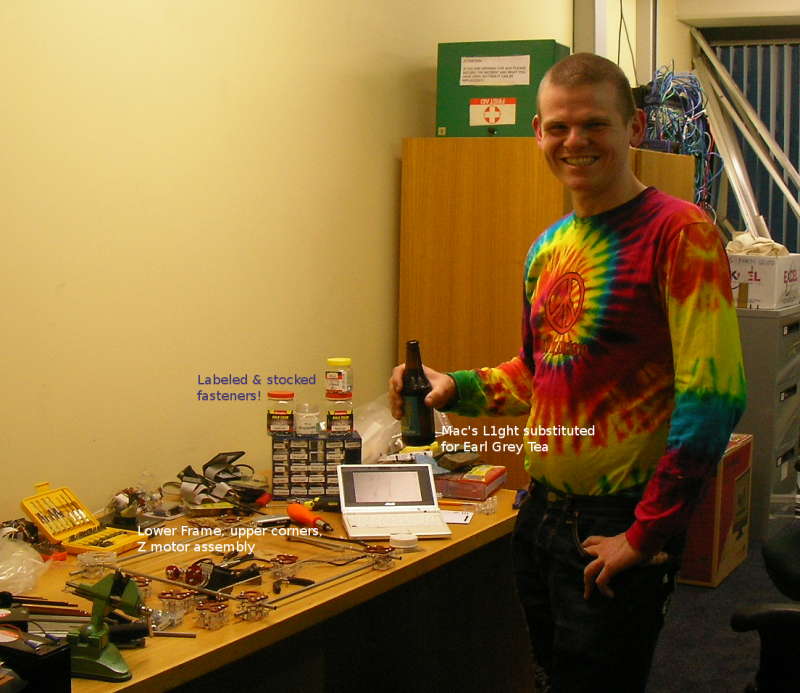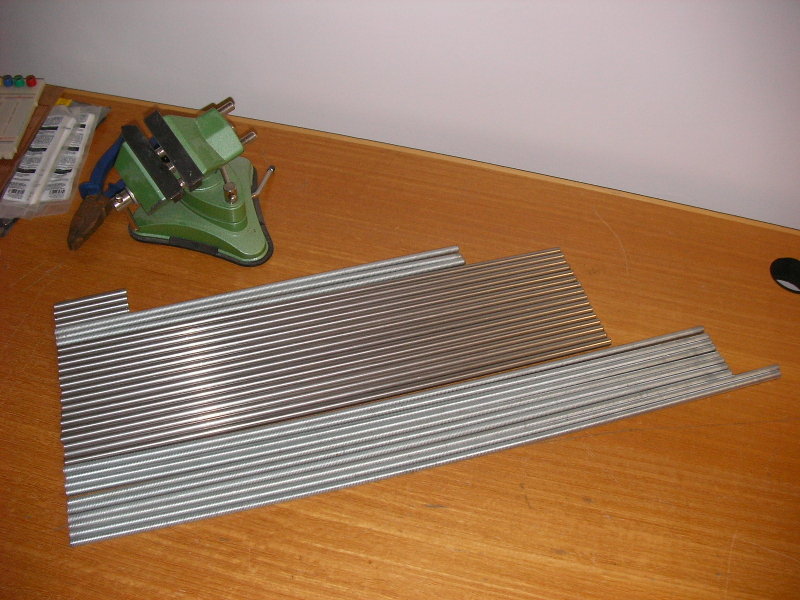
I spent today following much of these instructions for building a RepRap - in short, it’s a 3D printer printer. It can squirt out little lines of plastic and slowly make shapes, including parts for itself.

Of course doesn’t print absolutely everything it needs - I had to buy a whole lot of steel rod, which I found from suppliers in Petone and Lower Hutt, and today I found various fastenings suppliers in Te Aro for the nuts and bolts. The aim is for it to be able to print all of the parts for making itself that aren’t ‘easily’ found in your friendly neighbourhood hardware stores and engineering supply shops.
Currently there are still some parts which are specially made - principally the electronics; though you could make them out of stripboard if required. The Micro-Controller is a free design called Arduino that in principle anyone with silicon fabrification facilities could produce. It’s quite possible that this machine, or the “child” reprap I build with it will become one of the generation of 3D printers which is also able to also drop molten metal and thereby print circuits, potentially getting rid of the need for the circuit boards. There’s also one more head design which is a bit like a corking gun, and can print anything which you can squidge in and out of a balloon, such as sealant, glue or even chocolate.
The three motors it uses are not exactly off-the-shelf items; they’re a sort of “digital” motor called a stepper motor - they used to be common in dot matrix printers, though. They can be found, and Vik has managed to find a supplier who will stock and sell them for about $25 each.
Of course printers are not the only thing this can print, and there is a small collection of interesting gadgets to make with it appearing over at Thingyverse. In the short term, I hope to contribute to this project by assembling a parts list for this model, and helping Vik tidy up the assembly instructions. Longer term, who knows - producing designs for parts for third world development sure is tempting. But no doubt there will be a bit of room for making some “convenient solutions to modern living” along the way.